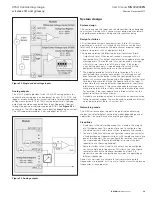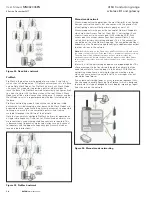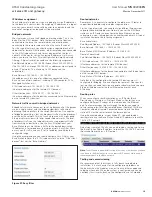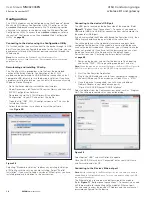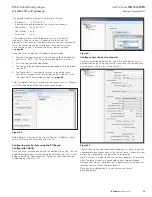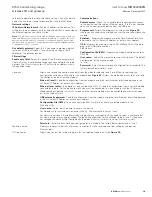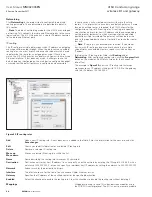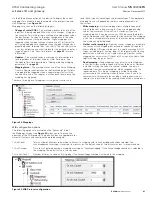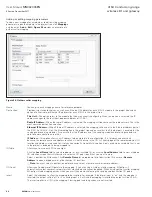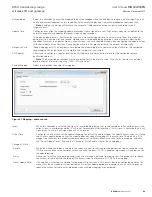
10
User Manual
MN032006EN
Effective December 2017
415U Condor-long-range
wireless I/O and gateway
EATON
www.eaton.com
Front panel connections (415U-2 Models)
The front panel on the 415U-2 module provides connections for
the following:
•
Eight digital input/output (DIO 1–8)
•
Two 12-bit, 0.1% accuracy differential analog inputs
•
Two single-ended 12-bit, 0.1% accuracy analog inputs
•
Two 13-bit, 0.1% accuracy current sourcing analog outputs
•
Connection terminals for common and +24 V analog loop supply
(ALS); maximum ALS current limit is 100 mA
Figure 14. Front panel connections 415U-2
Front Panel connections (415U-E models)
The 415U-E module provides a subset of the I/O functionality of the
415U-2. Terminals D1 and D2 are provided. Use the GND terminal on
the bottom panel for common connection.
Digital or pulsed inputs
Each digital I/O channel on the 415U modules can act as either
an input or an output. The input/output direction is automatically
determined by the connections and configuration of the I/O. If you
have an I/O channel wired as an input but operate the channel as an
output, no electrical damage will occur but the I/O system will not
operate correctly. If you are operating the channel as an output and
you read the corresponding input value, it will indicate the status of
the output.
Marked D1–8, the digital inputs share the same terminals as the
digital outputs on the 415U-2 module. A digital input is activated by
connecting the input terminal to GND or common, either by voltage-
free contact, TTL level, or transistor switch. Each digital input has
an orange indication LED that will turn on when the input has been
connected to a GND.
Figure 15. Digital/pulsed input wiring
Digital inputs 1–4 can be used as pulsed inputs. The maximum pulse
frequency is 50 kHz for input 1 and 2, and 1 kHz for input 3 and 4.
Digital/pulsed inputs are suitable for TTL signal level, NPN-transistor
switch devices, or voltage-free contacts (a relay or switch with
debounce capacitor).
Frequencies greater than 1 kHz need to use a TTL logic drive or an
external pull-up resistor (1 KΩ to V+). Pulsed inputs are converted
to two different values internally. The first value is the pulse count,
which is an indication of how many times the input has changed
state over a configured time period. The second value is a pulse
rate, which is an analog input derived from the pulse frequency.
For example, 0 Hz = 4 mA and 1 kHz = 20 mA.
All pulsed input counts are stored in non-volatile memory, so that the
values are saved in the event of a power failure or a module reset.
Digital outputs (pulsed outputs)
Digital outputs are open-collector transistors, and are able to switch
loads up to 30 Vdc, 200 mA. The eight digital outputs share the
same terminals as the digital input. These terminals are marked D1–8.
Figure 16. Digital pulsed output wiring
When active, the digital outputs provide a transistor switch to
EARTH (Common). To connect a digital output, see
Figure 16
.
A bypass diode (IN4004) is required to protect against switching
surges for inductive loads such as relay coils. The digital channels
D1–4 on the 415U-2 module can be used as pulse outputs with a
maximum output frequency of 10 kHz.
Digital output fail-safe status
In addition to indicating the digital output status (on or off), the LEDs
can also indicate a communications failure by flashing the output
LED. This feature can be used by configuring a fail-safe time and
status via the I/O Digital Output screen in the MConfig utility.

















